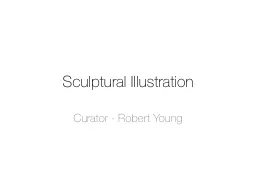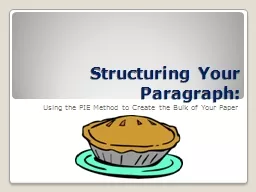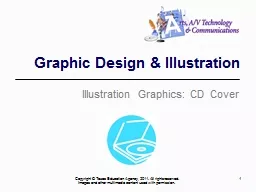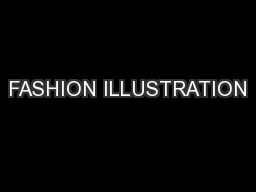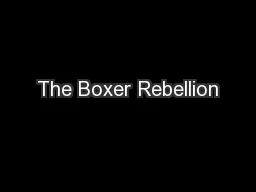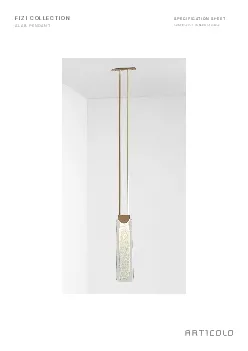PPT-Sculptural Illustration
Author : tawny-fly | Published Date : 2016-05-09
Curator Robert Young Sculptural Illustration Illustration exists almost entirely on the printed page when consumed by its intended audience whether its a book cover
Presentation Embed Code
Download Presentation
Download Presentation The PPT/PDF document "Sculptural Illustration" is the property of its rightful owner. Permission is granted to download and print the materials on this website for personal, non-commercial use only, and to display it on your personal computer provided you do not modify the materials and that you retain all copyright notices contained in the materials. By downloading content from our website, you accept the terms of this agreement.
Sculptural Illustration: Transcript
Curator Robert Young Sculptural Illustration Illustration exists almost entirely on the printed page when consumed by its intended audience whether its a book cover a spot illustration accompanying an editorial piece an advertisement in a magazine etc Often these images are only viewed for a matter of seconds and little consideration is given by the viewer as to how the image was made and what it consists of from the standpoint of technique Many people when asked how an illustration Is made would easily and confidently answer that it is drawn and this would be correct a vast majority of the time but not all illustration is drawn Just as is the case with any other form of visual art the possibilities are endless when it comes to how to make a picture and just as is the case between different disciplines of fine art . Artwork Guidelines Artwork Guidelines Illustration Services Illustration Services Illustration Services Multimedia Multimedia Multimedia FAQ FAQ FAQ Glossary Glossary Glossary Contact Contact Contact P-RAMS: Overview. March 2010. P-RAMS – Risk Framework. 2. PRAMS – Across Project Cycle. 3. Outcomes. Desired. Outcomes. Mitigation. Plans. Evaluate Risks /Ratings. Controls. Risk . Factors. P-RAMS - Process. Using the PIE Method to Create the Bulk of Your Paper. Thesis Statement:. -“This is the argument because of reasons A, B, and C”. or. -“This paper will discuss something because of A, B, and C”. Illustration Graphics: CD Cover . . CD Cover Specifications. The front cover must be 4.75" high and 4.75" wide.. The tray card (back cover) must be 4.62" high and 5.87" wide. . 2. Cover specifications . 2. Learning Objectives. Describe how accounts, debits, and credits are used to record business transactions.. Indicate how a journal is used in the recording process.. Explain how a ledger and posting help in the recording process.. 6. Learning Objectives. Discuss how to classify . and determine . inventory.. Apply inventory cost . flow methods and . discuss their . financial . effects.. Indicate the effects of . inventory errors . An understanding of the human body is essential to fashion illustration. The clothes are more important than the figure. The . figure CAN be out of proportion- . The fashion figure is often . taller- 9 or more heads high. 20. Learning Objectives. Apply basic CVP concepts.. 1. Explain the term sales mix and its effects on break-even sales.. 2. Determine sales mix when . a company . has limited resources.. 3. Indicate how operating leverage affects profitability.. Nature, extent and impact of the Rebellion. QUESTION: What does this image tell you?. Source: An illustration by a European correspondent of a glove-puppet show performed by Boxers to encourage recruiting. . Maxam Design, one of the reliable companies is presenting Illustration and commercial art services. Using the advanced technology, we create the beautiful illustrations. http://maxamdesign.com/portfolio/technical-art/ 6. Learning Objectives. Apply basic CVP concepts.. 1. Explain the term sales mix and its effects on break-even sales.. 2. Determine sales mix when a. company has limited resources.. 3. Indicate how operating leverage affects profitability.. Maxam Design, one of the reliable companies is presenting Illustration and commercial art services. Using the advanced technology, we create the beautiful illustrations. http://maxamdesign.com/portfolio/technical-art/ IFRS 2nd . Edition. Kieso, Weygandt, and Warfield. . 8. Understand . the items to include as inventory . cost.. Describe . and compare the methods used to price inventories.. After studying this chapter, you should be able to:. SLAB PENDANTSPECIFICATION SHEETAUSTRALIA / INTERNATIONALABOUT FIZI SLABThe Fizi Slab embodies Sculptural light Art Dramatic elongated effervescence suspended within a solid glass sculptural form Brea
Download Document
Here is the link to download the presentation.
"Sculptural Illustration"The content belongs to its owner. You may download and print it for personal use, without modification, and keep all copyright notices. By downloading, you agree to these terms.
Related Documents

